Ex-Triplex
A site for Ex-Peterborough employees
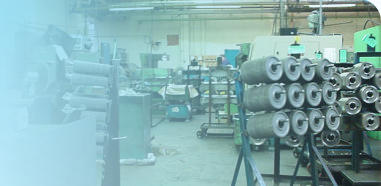

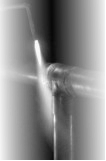
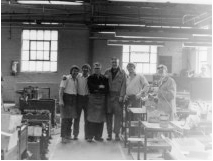

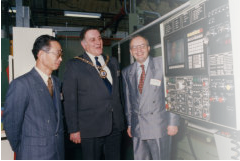
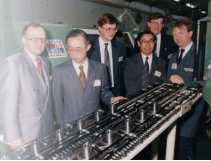
Pipe Shop (Unit 2)
Driveline (Unit 2)
Maintenance (Unit 4)
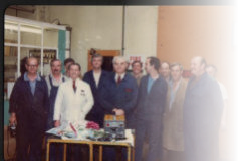
Prismatic (Unit 5)
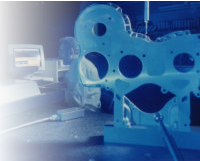
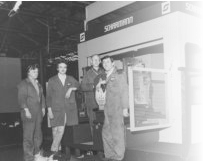
Pulley section (Unit 5)

The pipe shop included manual brazing benches for Perkins fuel, lubrication & cooling
pipes & also produced sump strainers. The facility initially used jigs and fixtures for
brazing and for bending pipes. In the 1990’s 2 CNC pipe benders were purchased
in order to increase flexibility. Until the mid to late 1990’s when the space was required
for more added value work for Rover and Honda. At which point all of the remaining
pipe work was sub contracted to Churchfields components ltd .
Driveline initially started in the early 1990’s, as a joint engineering project with a
Japanese supplier called YSK. This was in order to supply brake hub & disk assemblies
to the Swindon Honda plant, for the New Honda Accord. Initially one cell was installed
to turn, grind, drill & tap, press and assemble the units. This started the decline of the
pipe work, and gradually this type of machining (Mainly for Honda and Rover), replaced
the pipe work completely due to the increased added value. The half shaft line was
installed adjacent to the honda / rover facility in 1994 to produce drive shafts.
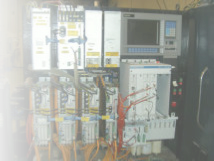
The factory maintenance team saw many changes over the years in order to support
the ever changing technological landscape, as well as changes to the predominately
mechanical nature of machinery to electrical, environmental changes to ISO14001 standard
were being implemented and product tolerances were increasingly hard to achieve.
The structure also changed from centralisation of the maintenance dept, to fragmented
(in order to support Cellular manufacturing) and then back to centralisation. It was a
very challenging area of the factory. Multi-skilling was encouraged as maintenance resource
dwindled in the face of technology changes and ever increasing factory shift patterns.
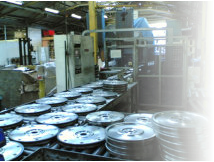
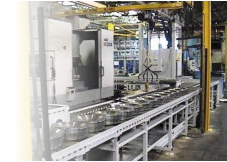
Flywheel section (Unit 5)
Factory Production Evolution
The factory evolved as technology changed throughout the mid to latter part of the 20th century. From the outset predominately mechanical machines were used, from mainly british suppliers (eg Alfred Herbert Ltd, James Archdale Ltd, William Asquith Ltd, Churchill Machine Tools, H.W. Ward Ltd, Wickman (Coventry), Newall Grinding Machinery , BSA Tools, David Brown Ltd and F. Pollard & Co). Although European & American suppliers were still used in the 1960’s the majority of machines and cutting tools were produced in the UK. Graces Guide Machine Tool Manufacturers During the late 1970’s and early 1980’s a transformation of machine tool suppliers in the UK took place, many of the larger companies went into administration or amalgamated with their competitors. Development costs increased with the advent of CNC and the machine tool manufacturing base in the UK started to dwindle, until the early 1990’s when most of the new machine tools came from Europe & Japan. In addition to the equipment development, tooling also went through a progressively radical change from the 1970’s with tool steel being largely replaced by carbide tools in various forms and the application of coatings to the carbide surface delivered increased speed, repeatability and quality and had a dramatic effect on the procedures, processes, manpower & skills required for the shopfloor production of mechanical parts. Metrology also needed to keep up with the advances in technology, and more sophisticated equipment was purchased CNC gear checking, CMM’s (Coordinate Measuring Machines), digital surface analysers and digital optical measuring equipment. Machine operator digital gauging was also employed as part tolerances reduced and proof to customer of results became the normal way of achieving customer Production Part Approval Process (Ppap). The cost of all this investment though, did not make producing parts more profitable and the competition in the automotive machining market was as fierce as ever. This culminated in the eventual demise of the factory, as the customer base reduced and work was being increasingly awarded to foreign competitors, who because of regional variations in labour cost’s and overheads could manufacture the same parts much cheaper (albeit initially). The general decline in the UK manufacturing sector in the latter part of the 20th century was unstoppable and the factory closure was announced in 2005, finally closing in 2006. The remaining work was divided between the other 3 factories in the group, Ketlon, Stratford, and Hereford plants. The factory was initially put up for sale, but no buyer was found. It was then demolished in 2010 and tenders for residential development were put forward for the site. Eventually, the contract was awarded to RG+P for 117 residential dwellings in 2012. N.B. The remaining 3 plants that made up the Triplex Components Machining Group were purchased by Amtek in 2007 and are all now closed. Ketlon & Hereford plants closed in 2009 followed by Stratford ceasing parts production in 2010.
The Aluminium machining cell initially machined sumps, manifolds, timing cases, timing
case front covers, and rear end oil seals (REOS) for Perkins Engines. Later this work was
augmented by filter heads, flywheel housings and other aluminium components. The late
1990’s saw some of the area given over to HTM Ltd (High Technology Manufacturing) as
the company was purchased as a going concern, This was a departure from aluminium
components mainly consisting of gears and shafts. The customer base was also increased
in the 1990’s in line with factory becoming a more generalised machined component supplier.

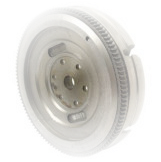
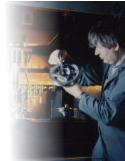
The pulley machining cell swedturn (SMT) lathes to machine mostly cast iron pulleys
for Perkins Engines, these were generally manufactured from castings although
sometimes from solid. Following operations consisted of finish turning, Drilling &
Tapping, Marking & Balancing. The section produced Single V groove, Double V groove
and Multi V groove pulleys. In the 1990’s once again the customer base was expanded
to decrease the reliance on a single customer. (Perkins Engines).
The flywheel machining cell was very similar to the pulley cell in terms of process, the size
differential was an issue for machining and handling. Flywheels of up to 450mm diameter
were produced, mainly out of grey iron castings. As with pulleys in the early days of cnc
swedturn (SMT12) were used for turning, but later hessapp automated twin spindle lathes
were purchased. Flywheel balancing was achieved by removing material from small areas
(hole drilling) and checking on a balancing machine.






Gear Section (Unit 1)
The gear section was one of the first production cells to be sited at the Walton factory
in the 1960’s, initially the gear machining was carried out by mechanical machines, and
as with most of the machining area’s, evolving more towards automation and later to
CNC. In the early 1990’s the direction of the company changed to spread its customer base
Customers for gears included Perkins Engines, JCB, Ford, Concentric, Borg Warner &
Frazer Nash. The gear section also had its own heat treatment facility in the form of
6 Ipsen furnaces used for gas carburising. Gears produced were spur or helical in form.





